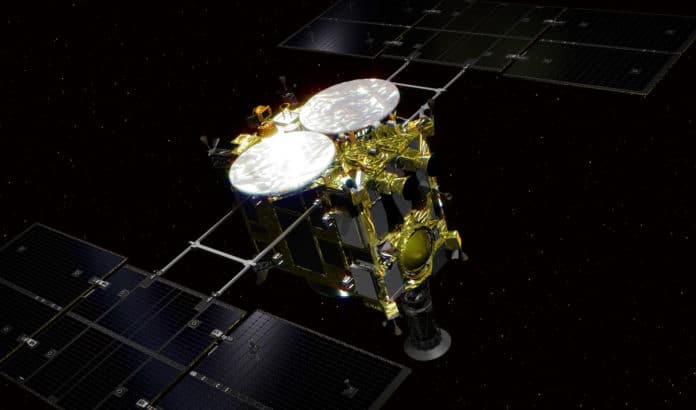After successful touchdown on a distant asteroid- Ryugu, on Thursday, July 11 around 10:30 am (0130GMT), Japan’s Hayabusa2 has collected first underground samples of the asteroid.
In February, the Japanese spacecraft collected its first sample by swooping close and firing a bullet into the asteroid’s surface to stir up material it then snagged with a horn-shaped collector.
Then, in April, it shot a much larger impactor into Ryugu, creating an artificial crater so it could examine the material churned up from beneath the surface. On Thursday, Hayabusa2 returned to the scene of the crime and fired a second bullet, collecting material from its newly made crater.
The spacecraft captured the images below as it left the asteroid.
JAXA took to twitter and shared, “The first photo was taken at 10:06:32 JST (on-board time) and you can see the gravel flying upwards. The second shot was at 10:08:53 where the darker region near the center is due to touchdown.”
[PPTD] These images were taken immediately after today’s touchdown (Jul 11) with the ONC-W1. First photo was taken at 10:06:32 JST (on-board time) and you can see the gravel flying upwards. Second shot was at 10:08:53 where the darker region near the centre is due to touchdown. pic.twitter.com/6OhrYShz4D
— HAYABUSA2@JAXA (@haya2e_jaxa) July 11, 2019
Ryugu is a C-type asteroid, which means it’s rich with organic carbon molecules, water, and possibly amino acids. Amino acids form the building blocks for protein and were essential to the evolution of life on Earth. Some theories suggest that an asteroid first brought amino acids here, gifting our planet with the seeds of life, though that’s still debated.
About three-quarters of our solar system’s asteroids are C-type. Hayabusa-2 aims to be the first mission to bring samples from such an asteroid back to Earth.
